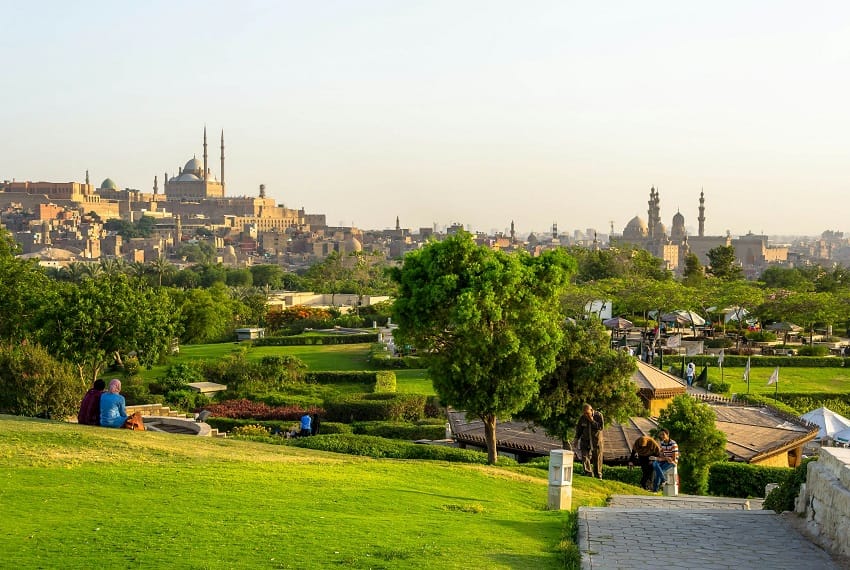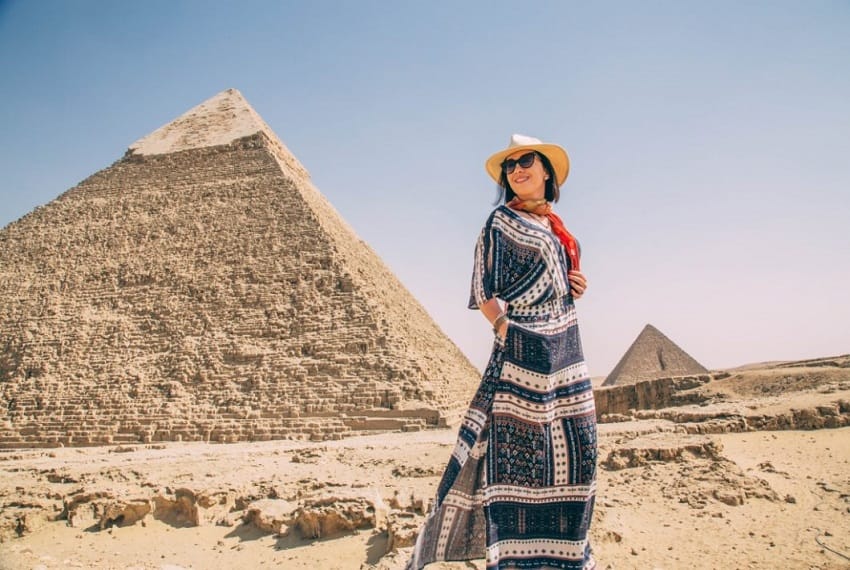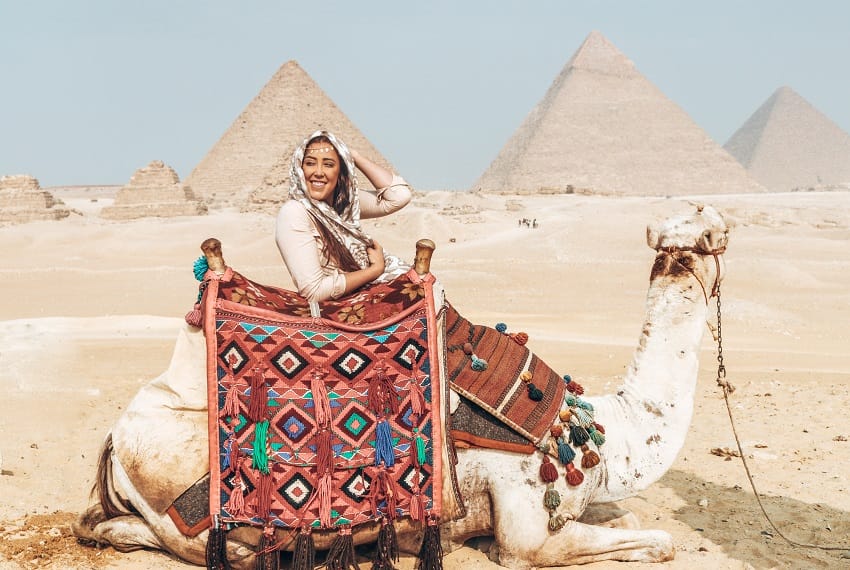Scheduling a vacation to Egypt is a thrilling experience because of its fascinating history, lively culture, and breathtaking scenery. Egypt provides a wide variety of activities, from touring historic pyramids to taking a Nile cruise, and from shopping in vibrant marketplaces to lounging on the Red Sea shore. But when you prepare for this trip, you need to take the weather, local customs, and activities you want to partake in into account. With the aid of this thorough guide, you can make sure that you are equipped for everything that this fascinating nation has to offer and that you are comfortable and respectfully attired when visiting Egypt.
The climate of Egypt varies greatly from area to region:
Mediterranean Coast—Alexandria, for example:
Weather: Mild, wet winters and warm, muggy summers.
Wearing layers and a waterproof jacket in the winter, and light, breathable clothing in the summer.
Nile Valley and Delta (such as Cairo, Luxor, and Aswan):
Weather: Mild winters and hot, dry summers. It’s noticeably hotter in Luxor and Aswan than in Cairo.
Wearing layers of clothing in lighter, more breathable materials, a hat, and sunglasses to shield yourself from the sun.
Desert areas, such as the Sinai Peninsula and Western Desert:
Weather: Year-round freezing nights and scorching summers.
Wearing light, breathable clothing during the day and warm layers at night, along with a cap and sunglasses.

Lightweight Materials: For the hot, dry weather, cotton, linen, and moisture-wicking materials work well.
Layers: Particularly in arid areas, layers are crucial for adjusting to changes in temperature from day to night.
Comfortable Footwear: For seeing cities and ancient sites, choose sturdy walking shoes or sandals.

Given that the majority of people in Egypt are Muslims, it is crucial to dress modestly in order to respect regional traditions and religious beliefs. This is particularly important while traveling to rural and religious locations.
Regarding Women:
Tops: Long-sleeved blouses or shirts with sleeves that cover the neck and shoulders.
Long skirts or pants are the bottoms. Steer clear of shorts and skirts.
Headscarf: Not required, yet helpful when entering mosques and other places of worship.
For Males:
Tops: Shirts with short or long sleeves. Steer clear of tank tops.
Bottoms: Long trousers or pants. While they are not appropriate in places of worship, shorts are usually fine in tourist regions.

It is imperative that you wear clothing appropriate for the activities and places you will be attending while in Egypt. Here’s a thorough explanation of what to dress in each situation:
Visiting historical sites (such as the Luxor Temples and the Giza Pyramids):
Women:
Bottoms: A maxi skirt or long, baggy pants. These are comfy to stroll in and offer sun protection.
Tops: If necessary, wrap your shoulders and collar with a scarf or shawl over a t-shirt or a lightweight long-sleeved shirt. Choose breathable materials such as linen or cotton.
Footwear: Well-supported sandals or cozy walking shoes. Sturdy shoes are a must because you’ll be walking on uneven areas a lot.
Accessory: Sunglasses and a hat with a large brim to shield the sun. When necessary, a thin scarf can also be used for modesty or sun protection.
Bag: A compact backpack or crossbody bag to hold necessities like water, sunscreen, and a camera.
Men:
Bottoms: Cascade or lightweight pants. These offer sun protection and are useful for strolling.
Tops: A long- or short-sleeved, breathable shirt. Long sleeves might provide even more protection from the sun.
Shoes: Robust walking shoes. Ensure that they are well-broken in to prevent blisters.
Accessory: Sunglasses and a cap to protect against the sun. a compact crossbody purse or backpack for necessities.
Visiting Places of Worship (such as Churches and Mosques):
Ladies:
Bottoms: A knee-length dress or long skirt. Ankle-length garments may be required in some mosques.
Tops: A long-sleeved shirt or blouse that covers the neck and shoulders. A light-colored, flowy cardigan might come in useful.
Headscarf: Mosques demand headscarves to cover hair. It’s not required, but it demonstrates respect for regional traditions.
Footwear: Since you must take them off to enter mosques, choose shoes that are simple to slide on and off.
Accessory: A little purse to hold your shoes and other necessities.
Men:
Bottoms: Long trousers or pants. Religious sites are not the proper places to wear shorts.
Tops: Shoulder-covering shirts with long or short sleeves. Keep sleeveless shirts away.
Shoes: Easy-to-take off shoes, as you have to take them off to enter mosques.
Accessory: A little purse to hold your shoes.
Beach & Coastal Communities (such as Hurghada and Sharm El Sheikh):
Ladies:
Swimwear: In most tourist resorts, a modest swimsuit or bikini is OK; but, while you’re not in the water, think about wearing a cover-up.
Cover-ups: A beach dress, sarong, or kaftan to wear when strolling about the beach or resort.
Shoes: sandals or flip-flops.
Sunglasses, a hat with a large brim, and lots of sunscreen are accessories. A beach bag to hold personal things, water, and towels.
Men:
Swimwear: Board shorts or swim trunks.
Tops: For times when you’re not in the water, a t-shirt or tank top.
Shoes: sandals or flip-flops.
Sunscreen, a hat, and sunglasses are accessories. A beach bag to hold personal belongings.
Adventures in the desert, such as camel rides and desert safaris:
Ladies:
Bottoms: Hiking pants or loose-fitting, lightweight pants. These shield against sand and sun.
Tops: A breathable, long-sleeved shirt. In addition to protecting your skin from the sun, long sleeves may help you stay cool.
Footwear: Hiking boots or shoes with closed toes. Sand may be hard on the feet, therefore it’s best to wear supportive shoes.
Accessory items: A scarf to shield against the heat and sand, sunglasses, and a hat with a broad brim. a pack with necessities and water.
Men:
Bottoms: Airy cargo pants or trekking pants.
Tops: For sun protection, wear a long-sleeved shirt. Seek for clothes that wick away moisture.
Shoes: Robust hiking shoes or boots.
Accessory items to guard against the sun and sand include a bandana or scarf, sunglasses, and a hat. A backpack to hold supplies and water.

Sun Protection: The sun in Egypt may be very strong. Bring after-sun lotion, lip balm with SPF, and high-SPF sunscreen.
Hydration: Always carry a reusable water bottle, especially when venturing outside.
Insect repellent: Beneficial in coastal locations and near bodies of water, like the Nile.
Lightweight Jacket: For air-conditioned spaces or chilly nights.
Portable charger: To maintain the battery life of your electronics, particularly if you use your phone for navigation and taking pictures.
Comfort, decency, and pragmatism all depend on what you pack for your vacation to Egypt. You can guarantee a seamless and pleasurable voyage by taking into account the weather, customs, and particular activities you intend to partake in while traveling. The appropriate clothing can help you get the most out of your Egyptian experience, whether you’re lounging by the Red Sea, browsing busy marketplaces, or gazing at ancient ruins.